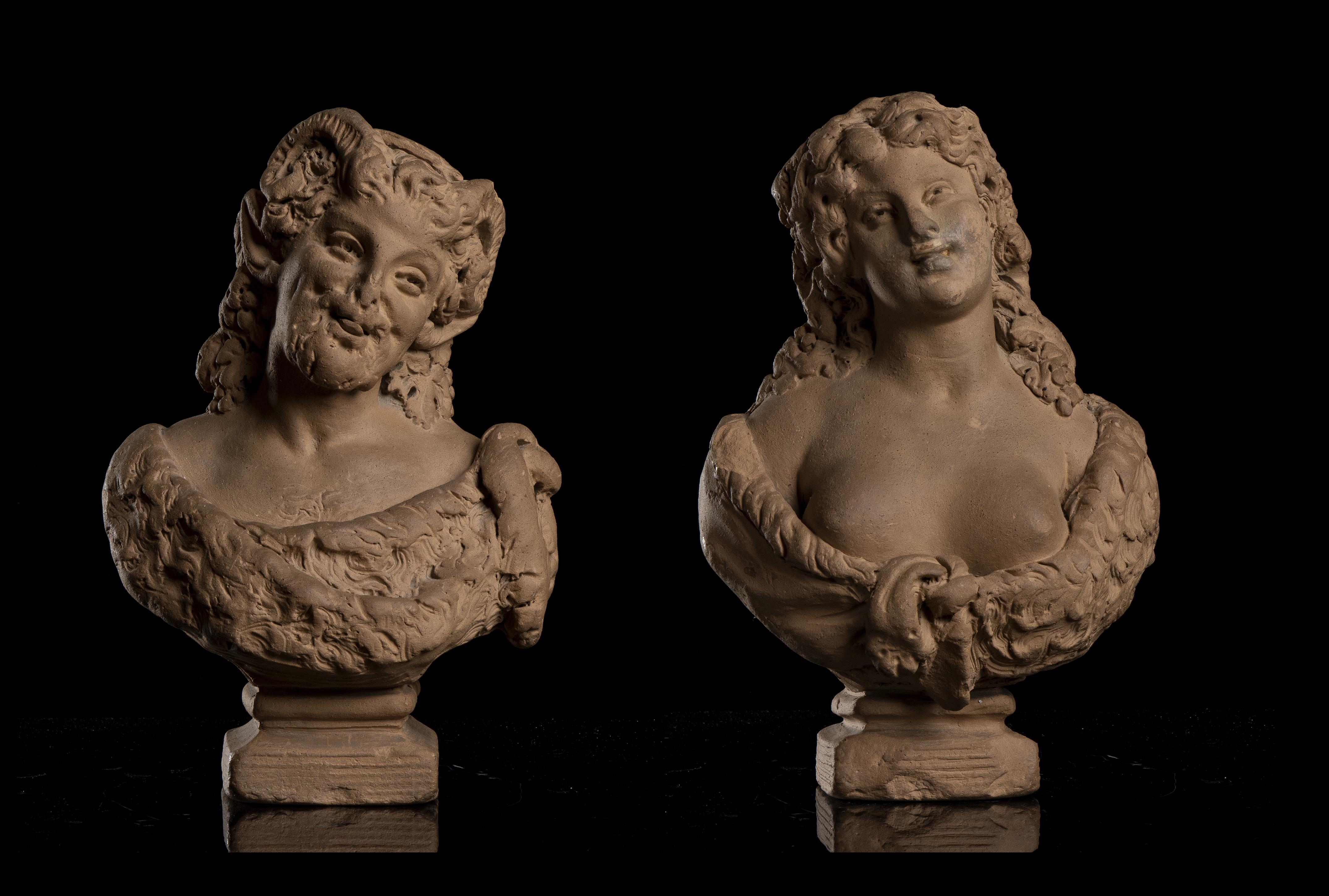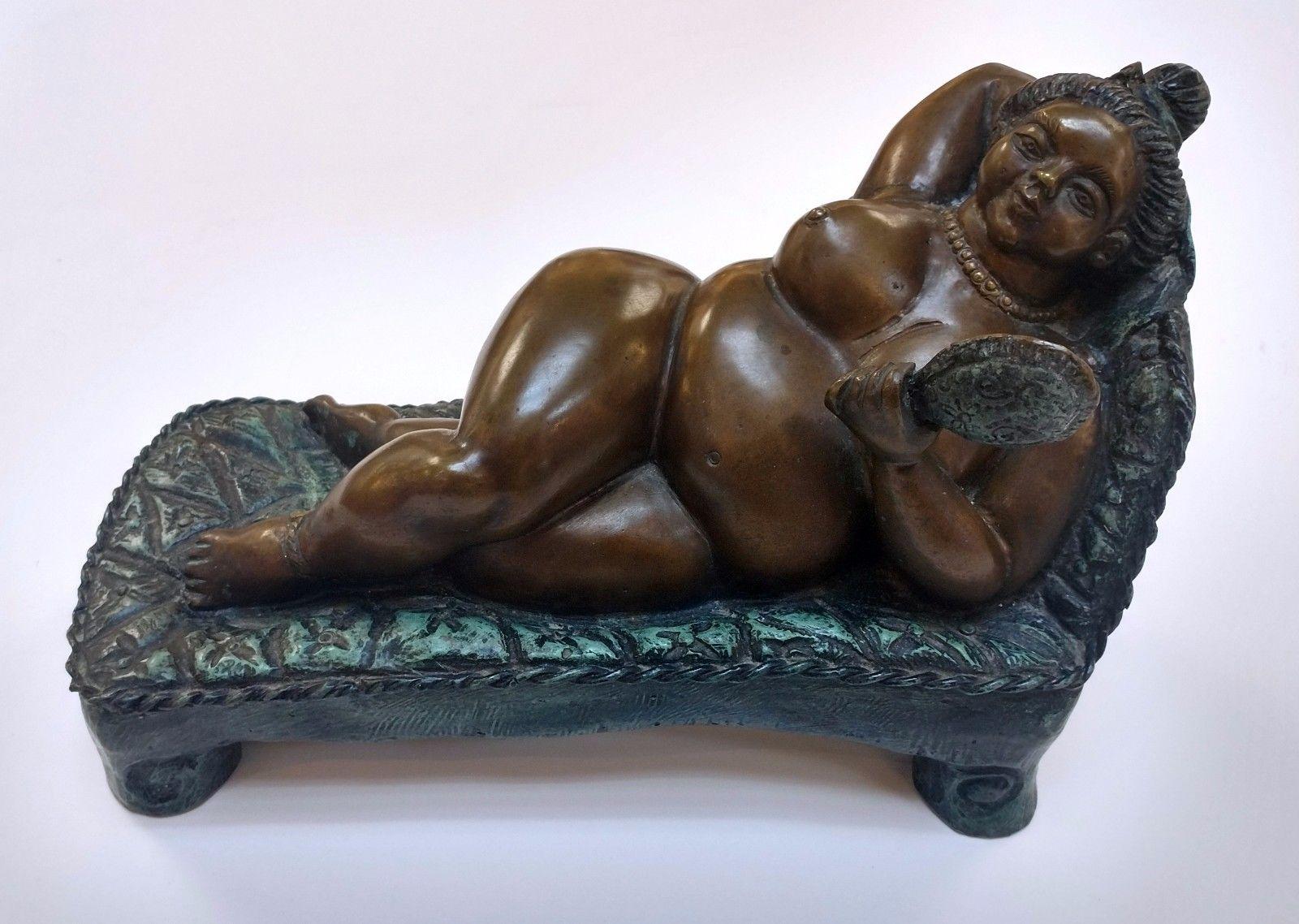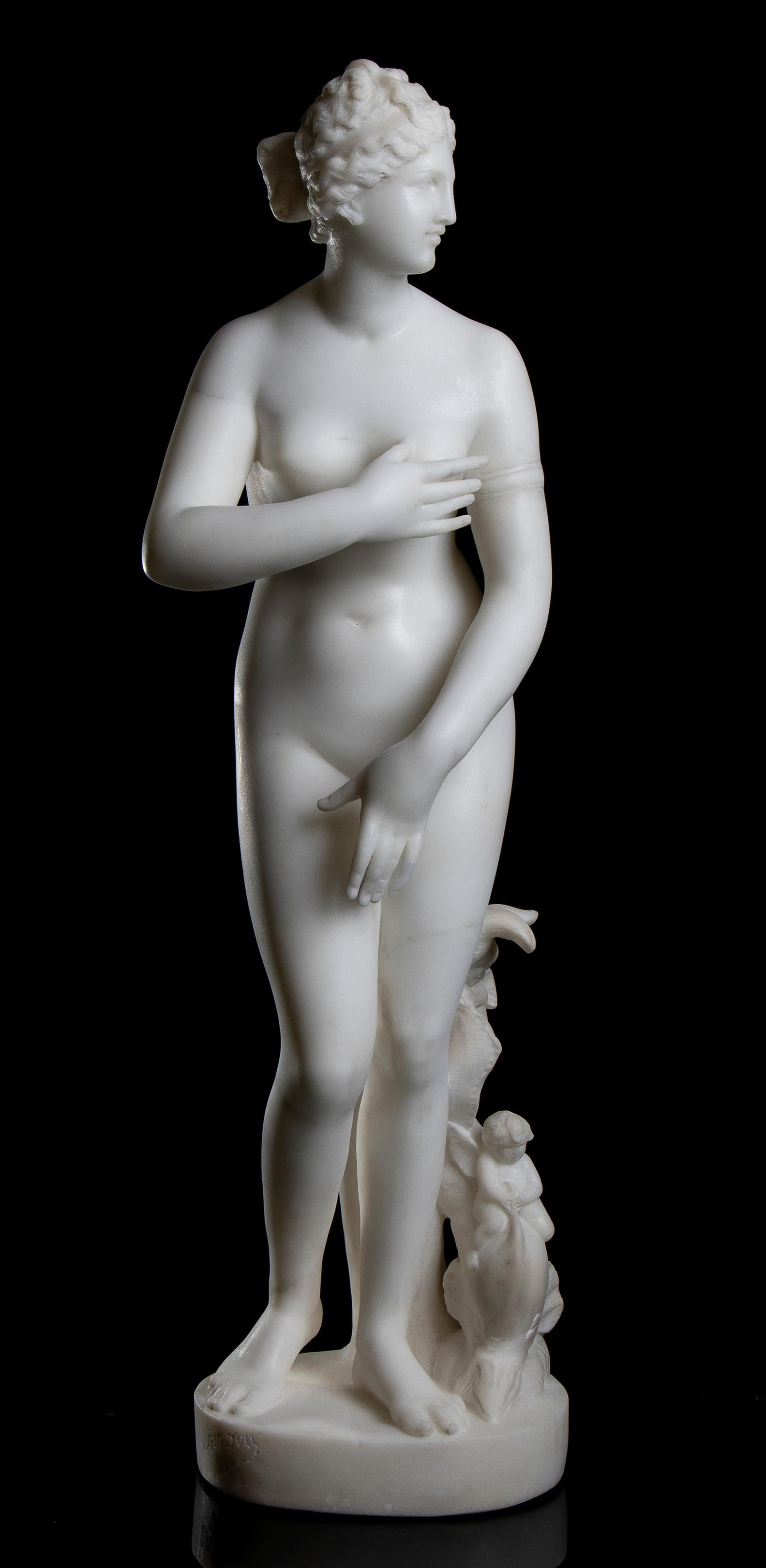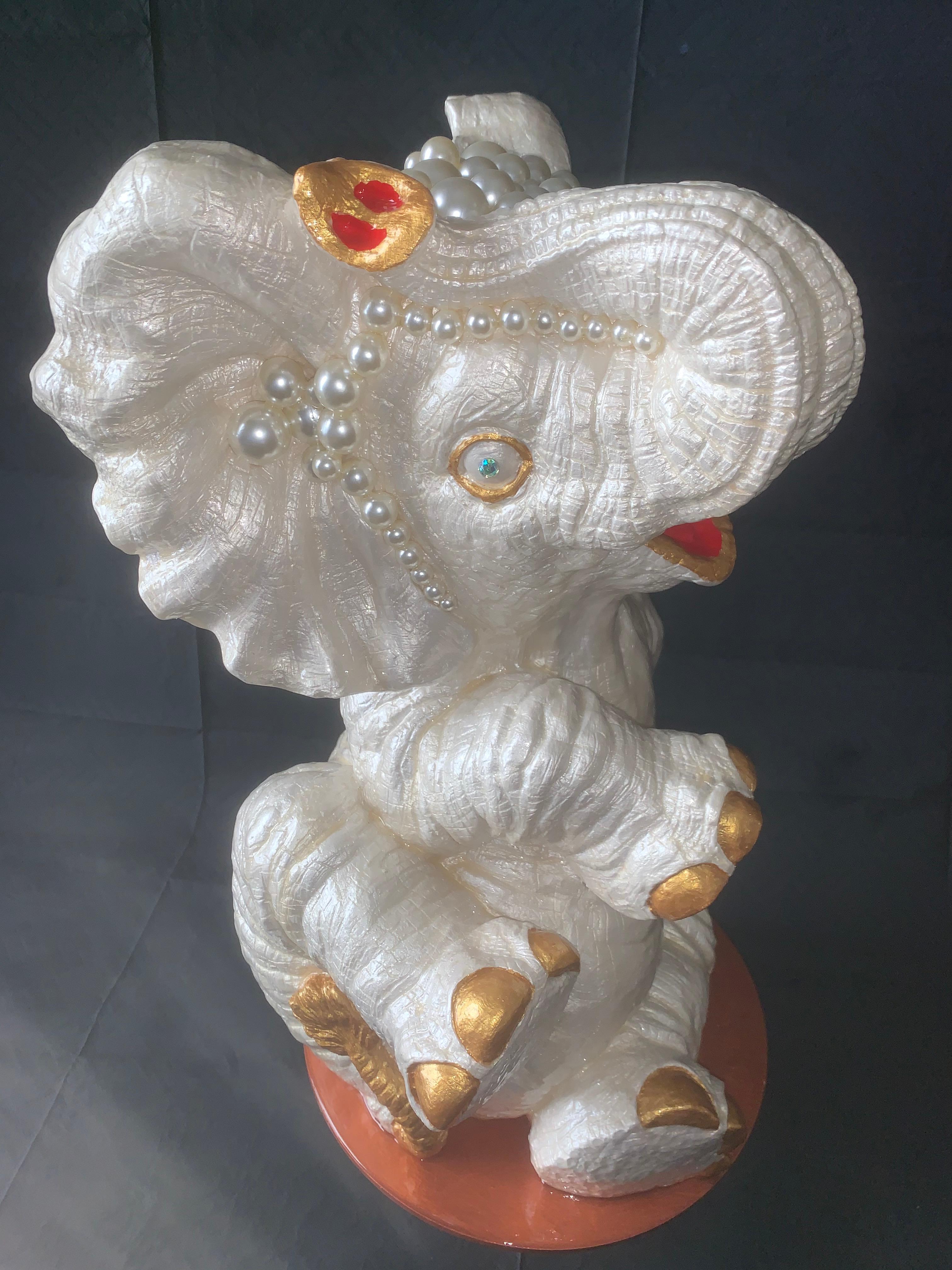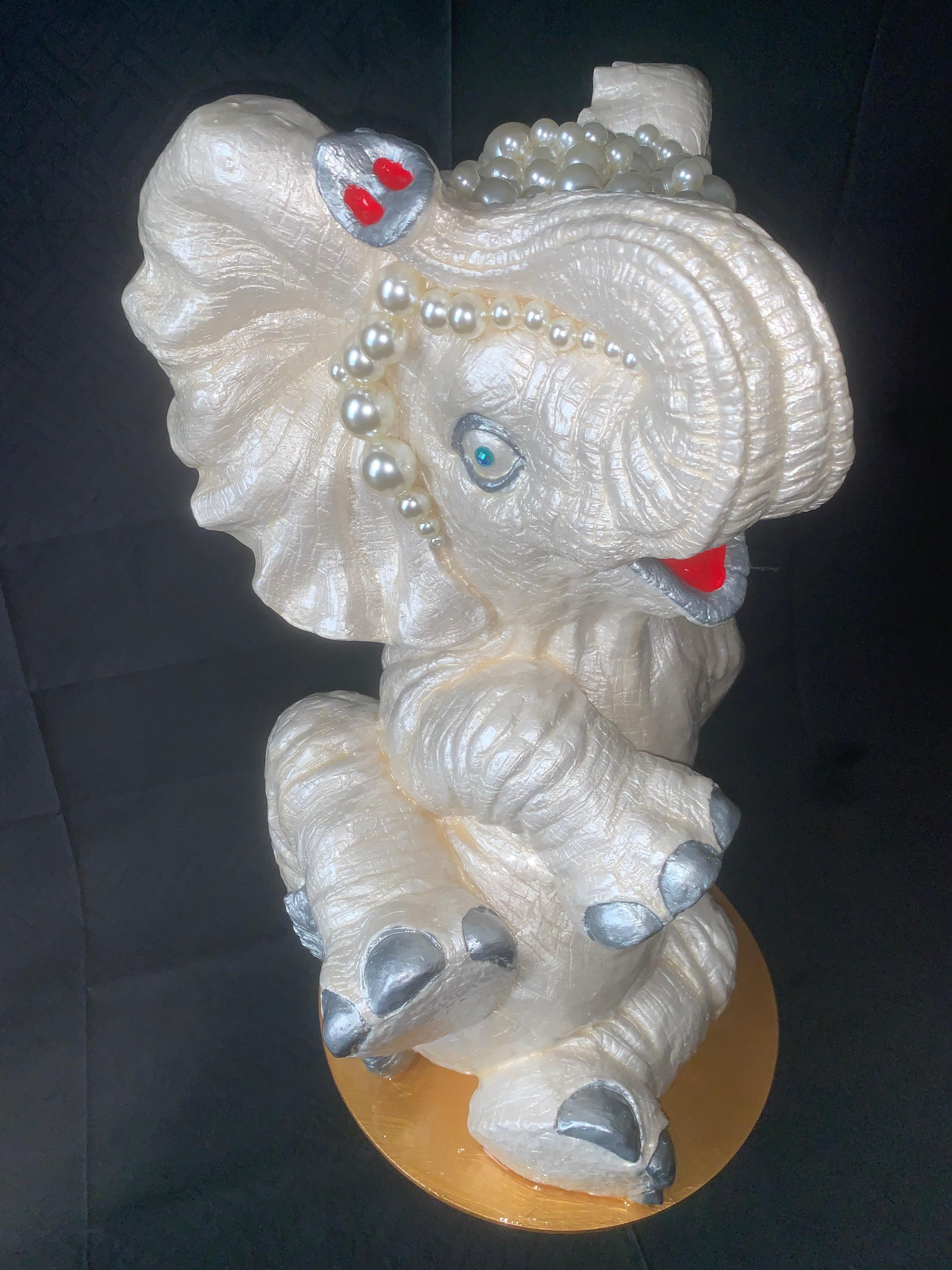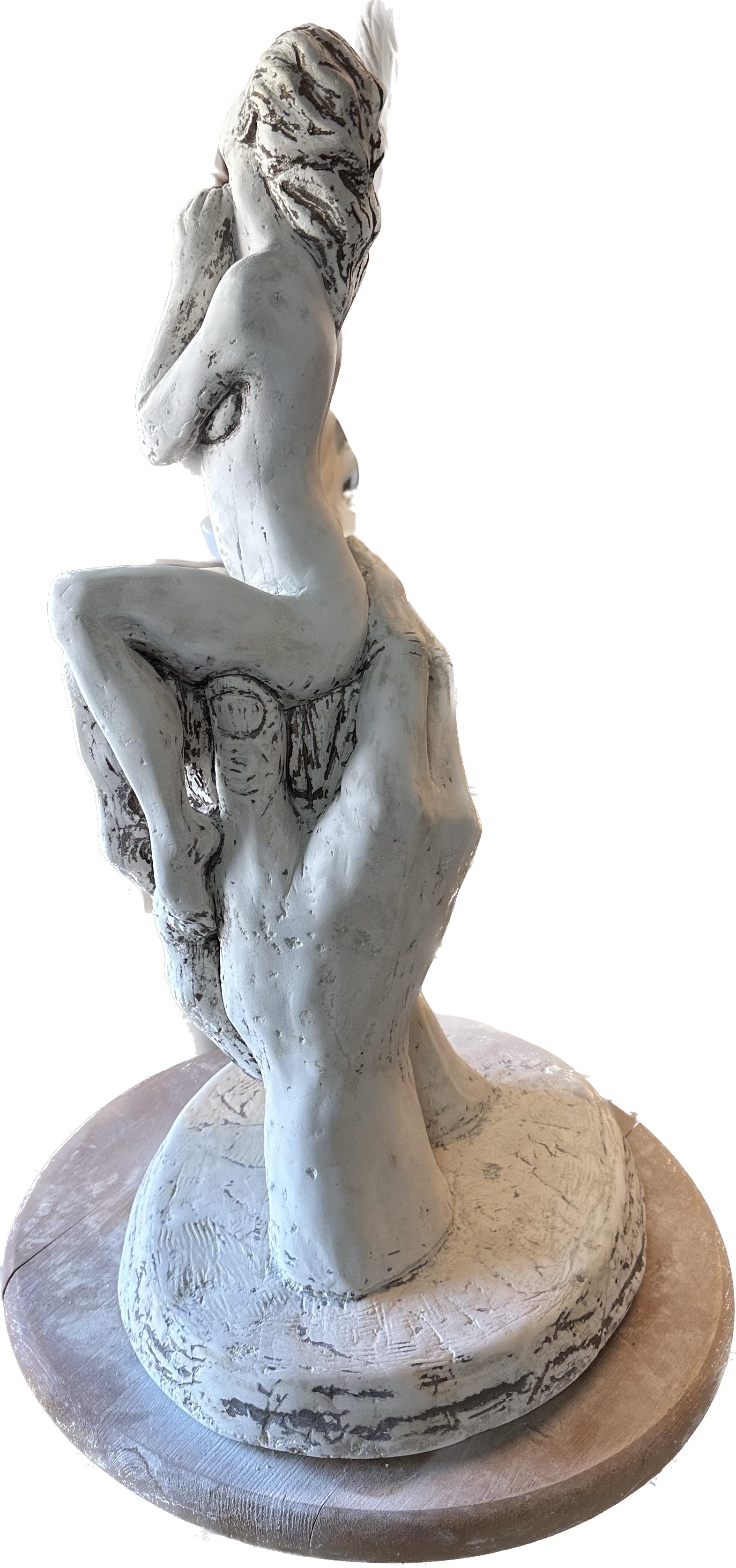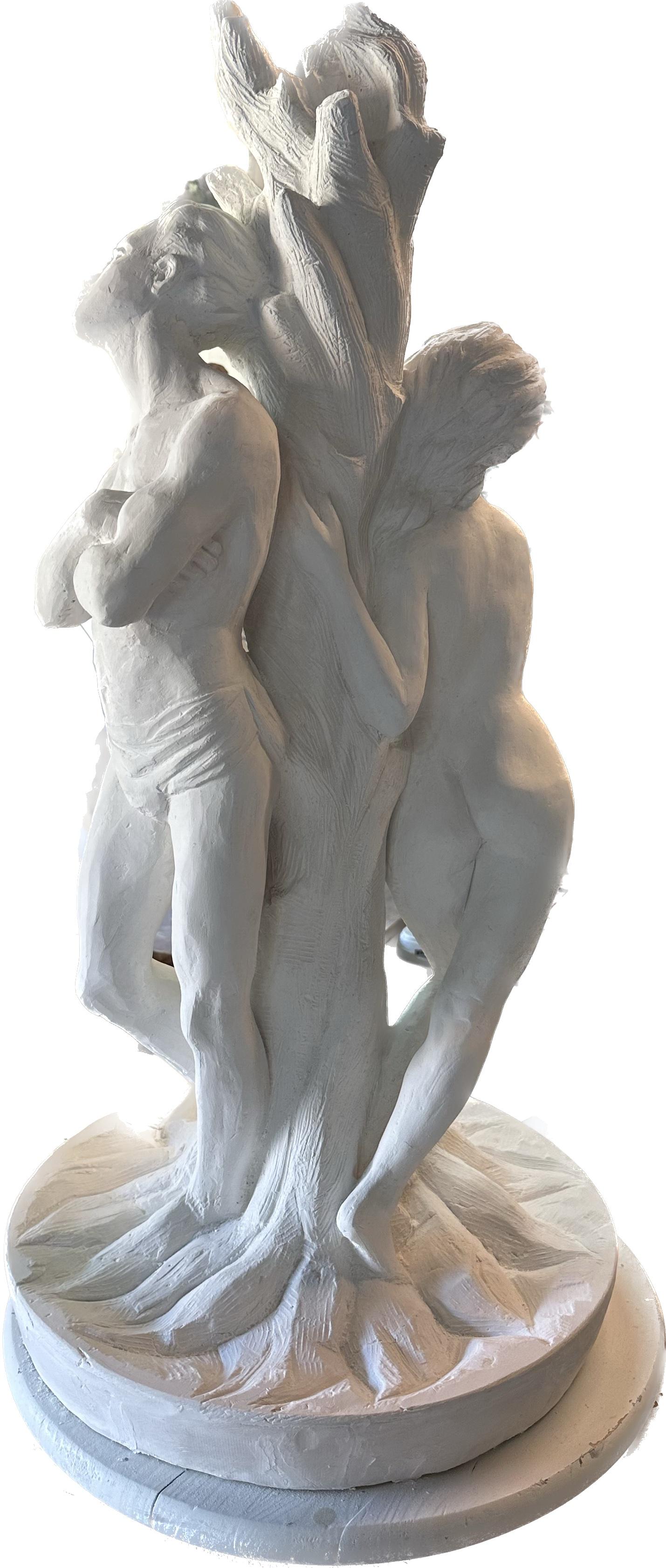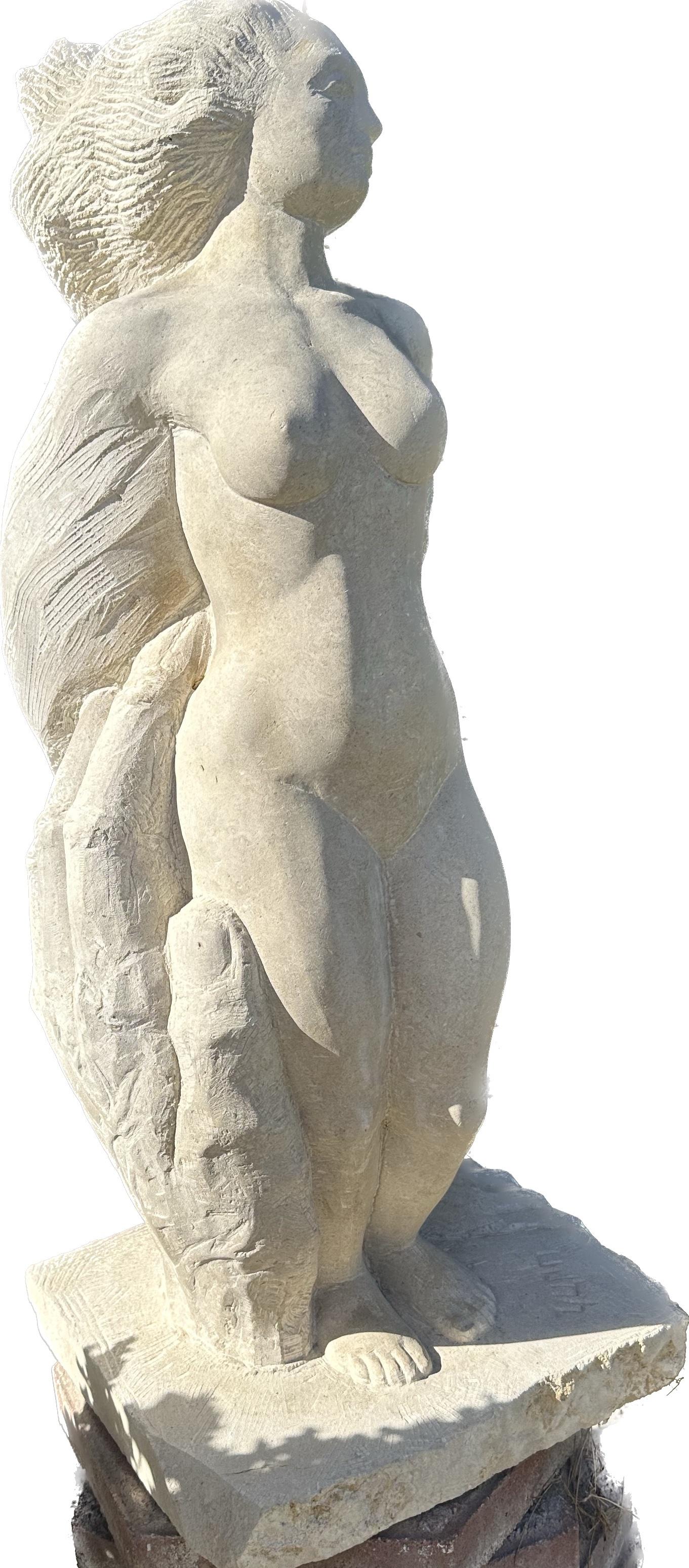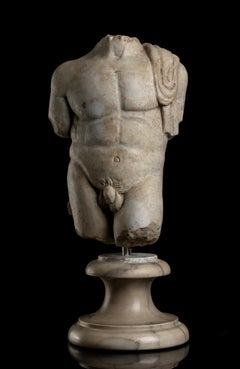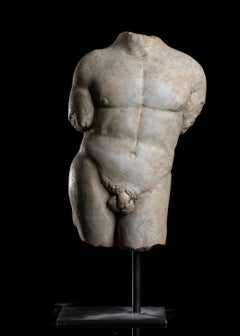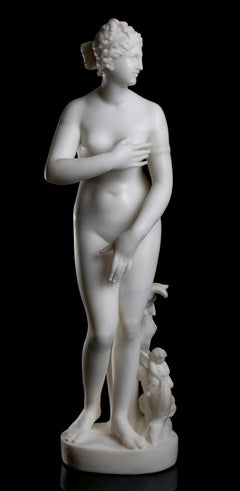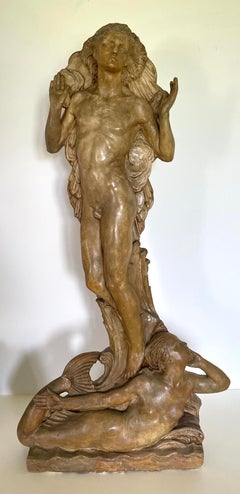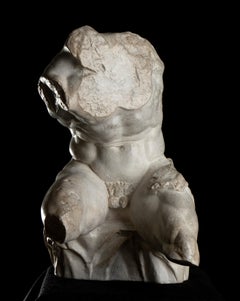
Belvedere Torso Grand Tour Style Figurative Sculpture Plaster 20th Century 20th
View Similar Items
Want more images or videos?
Request additional images or videos from the seller
1 of 11
Auction endedBrowse Current Auctions
Belvedere Torso Grand Tour Style Figurative Sculpture Plaster 20th Century 20thafter 1900
after 1900
About the Item
- Creation Year:after 1900
- Dimensions:Height: 16.15 in (41 cm)Width: 10.24 in (26 cm)Depth: 13 in (33 cm)
- Medium:
- After:Apollonio di Atene (Greek)
- Period:
- Condition:
- Gallery Location:Roma, IT
- Reference Number:1stDibs: LU1350110720312
About the Seller
4.9
Gold Seller
These expertly vetted sellers are highly rated and consistently exceed customer expectations.
Established in 1998
1stDibs seller since 2020
86 sales on 1stDibs
More From This SellerView All
- Sculpture Torso White Marble Of Heracles Italian Grand Tour Style ClassicalLocated in Roma, ITa white marble statuary aged torso sculpture of Heracles, standing on a three order circular white veined marble with a stainless steel pin. The sculpture anatomically and detailed c...Category
20th Century Other Art Style Nude Sculptures
MaterialsMarble
- Sculpture Marble Torso Man Classical Roman Grand Tour Style 20th Century italianLocated in Roma, ITAn aged statuary classical greek roman marble torso sculpture of an athlete, grand tour style central Italy early 20th century. The nude body of the athlete standing on his right le...Category
Early 20th Century Other Art Style Nude Sculptures
MaterialsMarble
- Sculpture Venus de' Medici White Marble 19th Century Signed Nude ClassicalLocated in Roma, ITan interesting and beautiful sculpture of Venus, knew as Venus de' Medici, depicts the goddess in a fugitive, momentary pose, as if surprised in the act of emerging from the sea, to which the dolphin at her feet alludes.Carved in the 19th century in a pure and elegant white marble, the sculpture here presented with the height of 81 m is a scale version of the original that has an height of 153 displayed at the Uffizi Gallery in Florence. The statue, a Venus pudica, is inspired, like the other variants of the theme, by Praxiteles' Cnidian Aphrodite, with particular similarities to the Capitoline Venus...Category
19th Century Figurative Sculptures
MaterialsMarble
- White Statuary Aged Marble Torso Man Sculpture Classical Greek Roman Grand TourLocated in Roma, ITAn aged statuary classical greek roman marble torso sculpture of an athlete, grand tour style central Italy early 20th century. The nude body of the athlete standing on his right le...Category
Early 20th Century Other Art Style Nude Sculptures
MaterialsMarble
- French Terracotta Sculpture Studio Torso Belvedere Grand Tour Style 19th CenturyLocated in Roma, ITa very interesting sculpture, a studio of the Belvedere Torso made in french in the 19th Century. Standing on a double order circular wood base, the sculpture present an harmonic and...Category
19th Century Other Art Style Figurative Sculptures
MaterialsTerracotta, Wood
- Sculpture Torso Belvedere Grand Tour Style 19th Century Terracotta AcademicalLocated in Roma, ITa very interesting sculpture, a studio of the Belvedere Torso made in french in the 19th Century. Standing on a double order circular wood base, the sculpture present an harmonic and...Category
19th Century Other Art Style Figurative Sculptures
MaterialsTerracotta, Wood
You May Also Like
- Richard Garbe - Helios - Early 20th Century British patinated plaster sculptureBy Richard GarbeLocated in London, GBRICHARD LOUIS GARBE, RA (1876-1957) Helios Signed and dated 1929 Plaster with patinated surface 86 cm., 33 ¾ in. high Garbe was born in Dalston, London, the son of Gustave Garbe,...Category
Early 20th Century Art Deco Nude Sculptures
MaterialsPlaster
- Industrial Machine Age American Scene WPA Mid 20th Century 1939 SF World's FairLocated in New York, NYIndustrial Machine Age American Scene WPA Mid 20th Century 1939 SF World's Fair HAIG PATIGIAN (American/Armenian, 1876-1950) Aeronautics Pediments Two Plaster Casts, c. 1930s each 13.25 x 14.75 x 6 inches It's possible these moquettes were created for the 1939 World's Fair, the Golden Gate International Exhibition in San Francisco. Provenance: Private Collection of Lois M. Wright, Author of "A Catalogue of the Life Works of Haig Patigian, San Francisco Sculptor, 1876-1950),” 1967 Loan to Oakland Museum of California (Oakland, CA) BIO Haig Patigian is noted for his classical works, which are especially numerous in public venues in San Francisco, California. Patigian was born in Van, Armenia, which at that time was under Turkish rule. Haig was the son of Avedis and Marine Patigian, both teachers in the American Mission School there. He and his older brother showed an aptitude for art early on and were encouraged by their parents. Their father himself had taken up the new hobby of photography. The 1880s were harsh times, however, for many Armenians under an oppressive rule by the Turkish government. Many people were fleeing to the safety of the United States. Suspicious Turkish authorities accused his father of photographing city structures for the Russian government, and in 1888 he fled for his life to America. Haigs father made his way to Fresno, California, and began life anew as a ranch hand. Within two years he sent for his wife, as well as Haig, his three sisters and brother, and in 1891 the Patigians made the journey from Armenia. Haigs father, an industrious man, worked on various farms, and eventually bought his own ranch and vineyard. It was among fertile farmland of Fresno that Haig grew up. Young Haigs education consisted of teachings by his parents and by intermittent attendance in public schools. Although he had dreams of becoming an artist, he did not have the opportunity for formal study of art, and began working long days in the vineyards around Fresno. At age seventeen, Haig made a step towards his dreams and apprenticed himself to learn the trade of sign painting. In his spare time he nurtured his interest in art by painting nature and life scenes with watercolors and oil paints. When his sign-painting mentor left Fresno, Haig opened his own shop and made a name for himself in the town. San Francisco, in the meantime, had been attracting artists since the Gold Rush and had become a thriving art center. Within a few years, Haig had put aside several hundred dollars to move to San Francisco, joining his brother who was already working there as an illustrator. In 1899, when he was twenty-three, Haig had saved enough money to enroll at the Mark Hopkins Art Institute in San Francisco. Like many aspiring artists of his time, Patigian supported himself by working as a staff artist in the art department of a local newspaper, and in the winter of 1900, nearing his 24th birthday, Haig began work for the San Francisco Bulletin, producing cartoons, black and white illustrations, as well as watercolors. In 1902 tragedy struck Haig and his family. His 29-year-old brother died of pneumonia, and then his frail mother died a short time later. Five months more saw his youngest sister, just out of high school, die too. Saddened and depressed, Haig moved out of the studio he had shared with his brother, and into a dilapidated studio in a poor section of town. During this time of sadness, Haig fed a growing interest in sculpture. In 1904 Haig created what he later called his "first finished piece in sculpture". The work, called "The Unquiet Soul", depicted a man thrown back against a rock while waves lash at his feet. The body was tense and twisted, with one hand, in Haig's own words, "searchingly leaning and clutching the rock, while the other masks his troubled head". The Press Club of San Francisco, which Haig had joined in 1901, put "The Unquiet Soul" on exhibition and local headlines proclaimed "Local Newspaper Artist Embraces Sculptor's Art", and "First Work Predicts Brilliant Future". With the support of friends and community acclaim, the young illustrator left his newspaper job and became a professional sculptor. The path of his new career was not easy though. Haig had never made much money working for the newspaper and his father needed help with growing debt from funeral expenses and business problems. From time to time Haig sold some artwork, but also occasionally borrowed from friends to pay the rent. He was the classic 'starving artist'. In the spring of 1905 a white-bearded 81-year-old stranger knocked on Haig's door. It was George Zehndner, from Arcata, California. Zehndner had been born in Bavaria, Germany in 1824, the son of a farmer. In 1849 he had come to America looking for prosperity, settling in Indiana, where he worked on a farm and learned English. He found his way to the West Coast in 1852. Penniless, he worked in various jobs from San Francisco to Sacramento, then found some luck working in the gold fields of Weaverville in Trinity County, and eventually moving to a farm on 188 acres near Arcata. In his 77th year in May of 1901, Zahndner had taken a trip to San Jose, where he stood in a crowd to see a man he thought much of, President William McKinley. McKinley was popular as 'the first modern president' partially because he realized going out to meet the common person increased his support. In September of that year, however, an anarchist assassinated the president while he stood in a receiving line at the Pan-American Exhibition in Buffalo, New York. Soon after, the city of San Jose erected a statue of the slain president in St. James Park. Zehndner took a second trip to San Jose where he visited the McKinley monument. Touched, Zehndner decided that, no matter the cost, his town of Arcata too would memorialize McKinley. George Zehndner had read about Haig in a newspaper article and asked if Patigian would create a heroic statue of the late President McKinley for Arcata. When asked how much it would cost, Haig responded, despite his borderline poverty, with the fabulous sum of $15,000. Zehndner agreed. The President was to be portrayed standing, wearing an overcoat, with his feet planted squarely on the ground. In the finished statue, one hand is held out before him in a typical posture of speaking, with the other hand holding the speech as his side. The 9-foot statue...Category
1930s American Modern Figurative Sculptures
MaterialsPlaster
$6,800 Sale Price20% Off - Signed Bruno Innocenti Female Nude Sculpture Relief 20 century plaster woodBy Bruno InnocentiLocated in Florence, ITThe bass-relief is made of plaster painted with the warm color tone of the earth in order to represent terracotta. The subject is a juvenile girl, as we can see by the tenderness and...Category
Mid-20th Century Post-War Nude Sculptures
MaterialsTerracotta, Plaster, Wood Panel
- LaocoonBy Raphaël Jaimes-BrangerLocated in Boston, MAPlaster, Gold Leaf. Signed and titled in pencil on base. Stamped with a wax seal.Category
2010s Contemporary Figurative Sculptures
MaterialsGold Leaf
- Naturalistic Woman Holding a Calf SculptureLocated in Houston, TXNaturalistic sculpture of a woman standing and holding a small calf. The sculpture is signed "Happy Birthday 1976" and "W. R. Stevenson" on one side of the base. Artist Biography: William Robert Stevenson was born in 20 May 1925 in Eugene, Oregon. His family moved to Minneapolis, MN but he promptly returned to Oregon and Washington during the Great Depression to work in the Works Progress Administration (WPA). Hoping to study Art, his future was sidetracked when he was drafted into the United States Army at age 17 years old in early 1942. Being a strong swimmer, and having worked at stables as a child, he initially served in the last US Cavalry Corps, and also as a Swimming Instructor for the United States Army. Upon the abolition of the Cavalry Corps, he was trained as a Gunnar and Tank Commander for the M-4 Sherman Tank under General Patton...Category
20th Century Naturalistic Nude Sculptures
MaterialsPlaster, Clay
- "Symbiosis" Original Plaster Cast Sculpture by Natalie KrolLocated in Pasadena, CAThis sculpture by Natalie Krol is made of plaster with a beautiful bronze color finish. It is the cast for the bronze. It shows a nude, pregnant woman resting. The expression on her ...Category
Mid-20th Century Modern Nude Sculptures
MaterialsPlaster
Recently Viewed
View AllMore Ways To Browse
Plaster Torso
Nude Garden Statue
Nude Male Statue Sculpture
Italy Snuff Box
Nemean Lion
Nude Male Torso Sculpture
Lion Hide
Muscular Men
Altar Statue
Grand Tour Torso
Nude Paperweight
Vintage Ajax
Grand Tour Marble Torso
Black Panther Drawing
Vintage Black Panther Statue
Anthropomorphic Sculpture
Liberty Sculpture
Stone Sculpture Family
